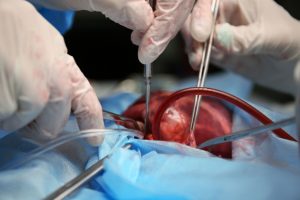Introduction:
Nerve trauma resulted from either mechanical injury such as accident, amputation or
inflammatory/immune disease may give rise to neuropathic pain, which are often resisting to
treatment. This pain in animals as in human is a complex phenomenon composed of physiological
components as well social, emotional and behavior components. Although, working with rodent
models over the years contributed to our understanding of the pathophysiology of chronic neuropathic
pain, these models are somewhat limited in their contribution of translating preclinical pharmacology
results to the clinic. Herein, we document a new pig model for chronic pain induced by proximal
peripheral nerve trauma. Multi-molecular immunolabel show pathological profiles of the innervation
and neural signaling properties of keratinocytes like those observed in human patients afflicted by
PHN and CRPS (Albrecht et al,. 2006; Hou et al., 2011; Ibraham et al. (2003); Khodorova et al 2003;
Petersen et al., 2001, 2010; Zhou et al, 2008).







